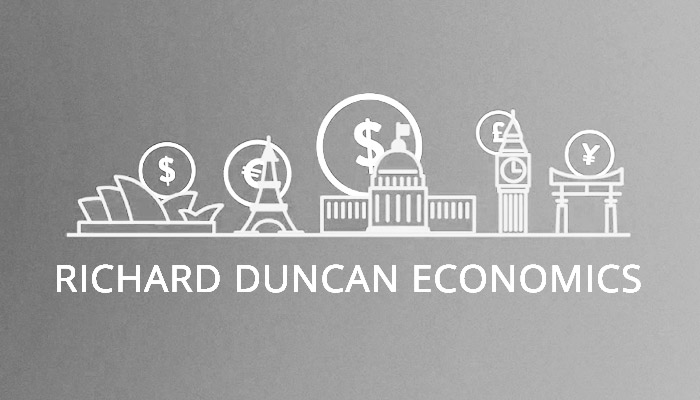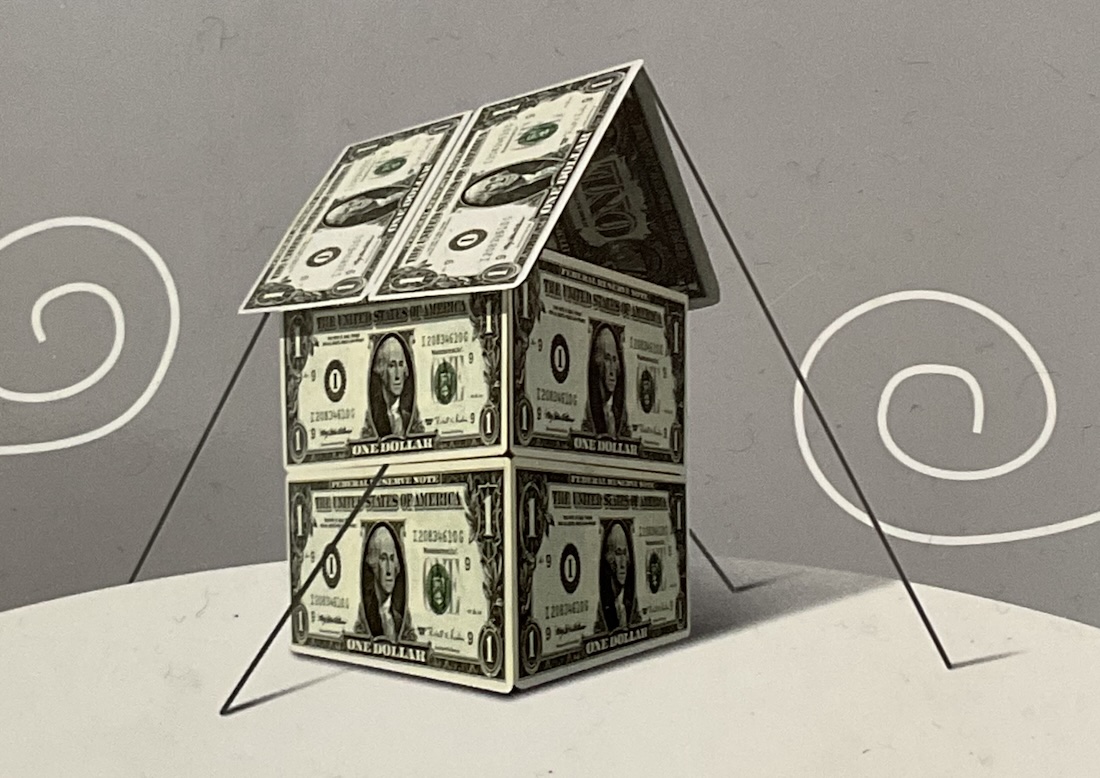The Corruption Of Capitalism, Preface to the 2011 Edition

Posted June 16, 2011
Preface to the 2011 Edition of The Corruption of Capitalism
[Now available on Kindle and NOOK]
From the early 1980s, debt-fuelled consumption in the United States drove global economic growth and facilitated the spread of globalization. Economic policy was formulated based upon the belief that markets are most efficient when left unregulated. Exchange rates floated, massive trade imbalances were ignored, and for three decades the world was transformed by one economic miracle after another. Then, in 2008, that economic paradigm collapsed, its philosophical underpinnings exposed as a delusion. Government bailouts were required to save global finance from systemic destruction. Government spending was increased dramatically to offset the collapse in consumption by the private sector. Government intervention thus prevented an economic breakdown into worldwide depression.
During the year and a half since The Corruption of Capitalism was published, policymakers and financial markets have come to understand that a paradigm shift has occurred. Government deficit spending, financed with paper money creation, has replaced debt-funded private consumption as the principal source of global growth. The United States has been kept out of depression by $4 trillion in government deficit spending financed largely by the creation of more than $2 trillion by the Federal Reserve. The European banking system – and the Euro itself – escaped destruction when the European Commission, the European Central Bank and the International Monetary Fund jointly intervened to avert the bankruptcy of Greece, Ireland and Portugal. In Asia, Chinese state-owned banks delayed the implosion of China’s great economic bubble by expanding total loans by 60% over 24 months, while Japan’s government extended its policy of fiscal life-support for the Japanese economy into its third decade.
This new, government-financed growth model is unstable and unsustainable, however. In the short run, trillion dollar budget deficits can be financed, but only with the help of paper money created by central banks. Printing money causes inflation, however; and inflation creates instability. The Fed’s second round of “Quantitative Easing” produced a sharp spike in global food prices that has had disastrous consequences for the two billion people who live on less than $2 per day. Food riots have toppled governments across North Africa and the Middle East; and should the Fed’s printing press continue to drive food prices higher, hunger-inspired revolution may soon spread east, destabilizing governments all across Asia. Eventually, government deficit spending on the present scale can end only one of two ways, in hyperinflation or in default. Consequently, governments will only be able to continue to support the global economy in its current size and configuration for a few more years.
But what form will the next global economic paradigm take? During the 1930s, when the debt that fuelled the Roaring Twenties could not be repaid, competitive currency devaluations and protective trade tariffs contributed to a collapse in international trade. The global economy was shattered. The new paradigm that emerged then was one of national self-reliance. In the United States, a new equilibrium was established at a level of economic output that was 45% lower than that of 1929 and at a rate of unemployment that exceeded 20%. England retreated behind a trade regime based on colonial preference. Germany and Japan turned to National Socialism.
It is far from certain that we will be able to avoid a similar catastrophic global economic breakdown in the years immediately ahead. Immense challenges must be overcome if that outcome is to be prevented. New sources of global aggregate demand must be developed to replace the world’s unsustainable dependence on debt-driven growth. And that transition must occur at the same time that the destabilizing trade imbalances between nations are eliminated and the excesses of recent decades are unwound. Thus far almost no progress has been made in any of these areas. Global supply greatly exceeds global demand, as determined by the wages of the global workforce. The United States cannot produce as much as it consumes, while China and many other Asian countries cannot consume as much as they produce. The global banking system has not yet been adequately regulated; its $600 trillion derivatives Ponzi scheme remains opaquely in place. Currencies continue to be manipulated and foreign exchange reserves continue to accumulate at the rate of more than $1 trillion a year; while the hollowing out of the US manufacturing base continues apace. Finally, and perhaps most importantly, the two most fundamental aspects of this global crisis have yet to be understood: the US economy is structurally broken and China’s era of rapid, export-led growth has come to an end. This is not a promising background against which to attempt to restructure the global economy.
President Obama has warned his countrymen that this is their “Sputnik moment”, but he has offered no NASA-like program that could end America’s structural economic decline. Fed Chairman Bernanke has admitted that the Dollar Standard is flawed, that it cannot prevent the large trade imbalance that have destabilized the world; but the United States lacks the power to unilaterally resurrect a viable, rule-based international monetary system. The BRIC nations have cynically called for a new international reserve currency to replace the dollar, while knowing full well that their economic models would collapse under any system that did not allow the United States to finance its trade deficits by issuing dollar-denominated debt. Warnings, belated analysis and unrealistic demands are not solutions.
The future – the happiness and prosperity of mankind – will be determined by how global supply and global demand are brought back into balance. If the means are found to expand aggregate demand sufficiently and sustainably, then the global excess supply will be absorbed and the global economy will begin to grow again. If, on the other hand, equilibrium is restored by a collapse in supply – back to a point at which there is real demand, a point determined by the current income and purchasing power of the individuals who comprise the world’s population – then globalization will collapse and the world economy will plunge into depression. Should that occur, millions of people around the world could starve before the decade is out. The geopolitical repercussions would be calamitous.
Investment and innovation could avert such a catastrophe. This book offers proposals that, if implemented, would boost aggregate demand, rein in global imbalances and eventually restore the conditions under which balanced budgets and sound money could be reestablished. Our window of opportunity to fundamentally restructure the global economy and restore sustainable growth has not yet closed. Leadership and vision are lacking, however; and time is not on our side.
The Corruption of Capitalism is now available on Kindle:
The Corruption of Capitalism is now available on NOOK:
https://www.barnesandnoble.com/w/the-corruption-of-capitalism-richard-duncan/1031520490?ean=2940013574311&itm=1&usri=the%2bcorruption%2bof%2bcapitalism


Nice summary. Are there any updates in this 2011 edition compared to the 2009 edition (other than the preface)?
No. Only the preface and the cover are new.
Good article.
I read your books. You stated that US need to come up with innovative technology
such as efficient solar cells or cure for cancer, which can potentially wipe out the trade
deficit of the US.
However, I don’t think these are possible for next decade or so.
The cancer research is still far away from finding its complete cure.
The human study will take at least a decade, even if there are possible research.
Solar cell technology is already out there, but I’m not sure if US has any advanced
technology in this area or anything to develop further. It is a mature technology
in my opinion. Also, China has well established technology in Solar cell too.
So, in my opinion, the balance can only be found by US reducing its debt by slashing
government spending and selling its asset, and China (and other Asian countries)’s
economic restructure, so that their own people can consume what they produce.
Until we reach that point, stagflation seems inevitable.
Richard, What would be the consequence of abolishing the federal reserve in the midst of this crisis?
PS. Why are you not advising the President?
Where can I find a hard cover of “The Corruption Of Capitalism”?
Hi Craig,
The 2011 edition of The Corruption of Capitalism (paperback) is available on Amazon (US).
By Law only the U.S. Treasury can print money and mint coinage, So why is the Federal Reserve being accused of printing money by so many journalist’s?.